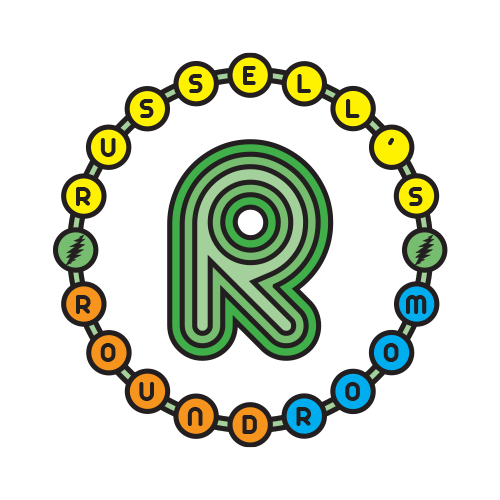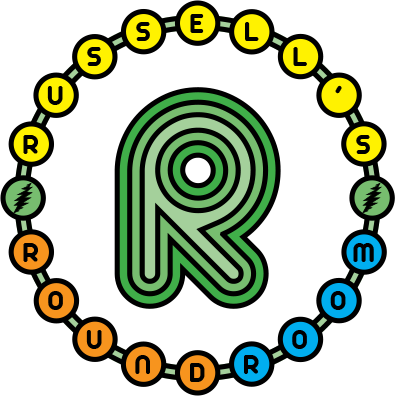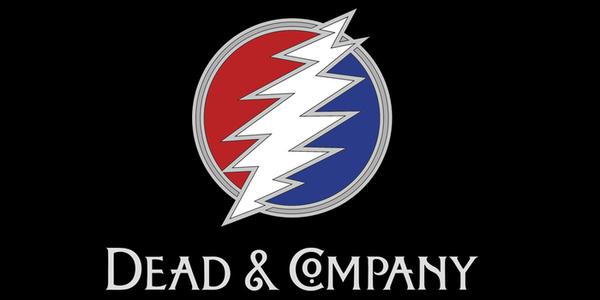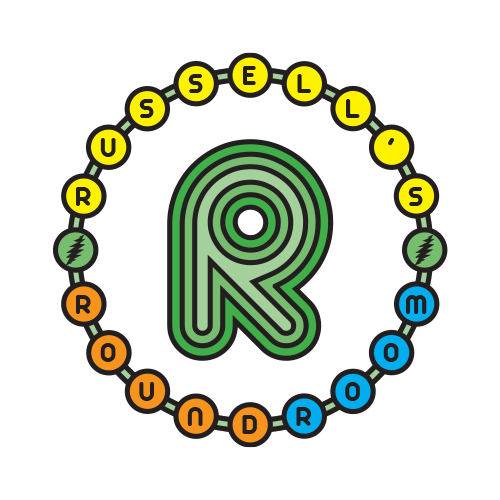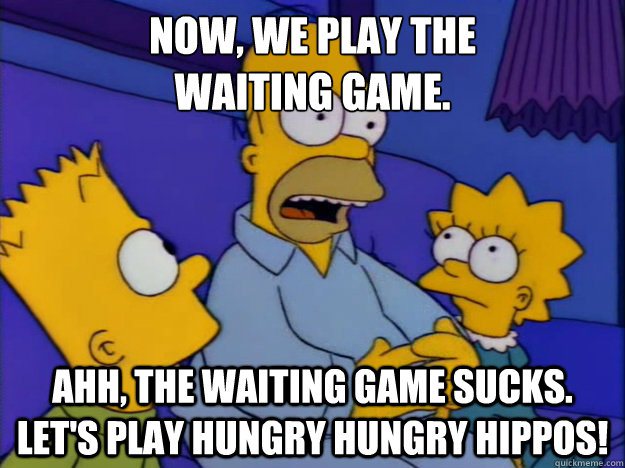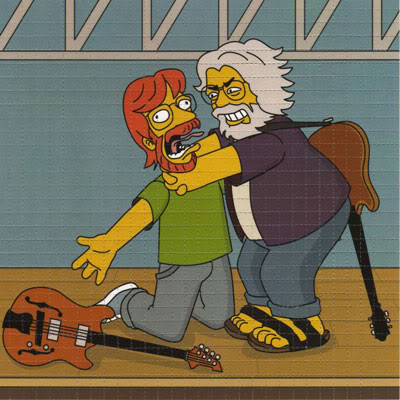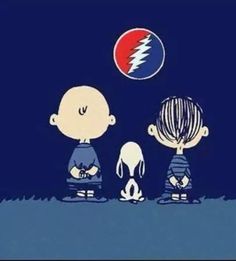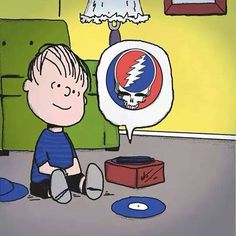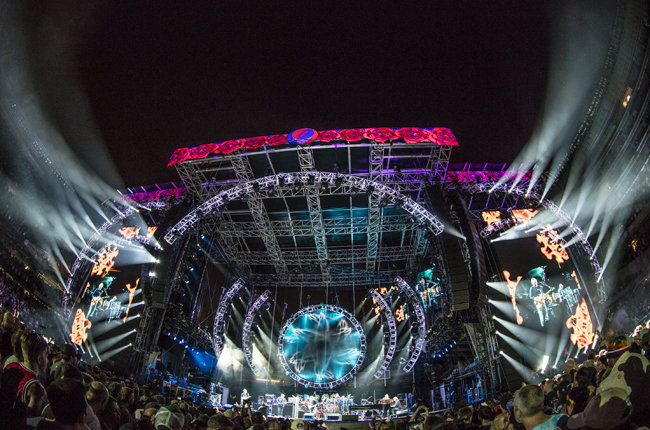 Photo Credit: Jay Blakesberg, July 3, 2015
Photo Credit: Jay Blakesberg, July 3, 2015
As articles and segments are being produced and presented on the band by news organizations across the States in celebration of Fare Thee Well: Celebrating 50 Years of Grateful Dead, I decided I'd like to contribute to such happenings. In honor of the weekend festivities, and the end of an era that could be coined as Dead 2.0, I am sharing with you my undergraduate senior thesis that I wrote on the Deadhead community, in 2008, for a history class called Streaking Through The Seventies. At the time I was able to convince my professor to let me cut class so I could attend the 2008 Dead reunion at Penn State University to interview fellow Deadheads as subjects for my historical analysis. While my interviews were few and far between (I was really there for the show and gathering), a few anecdotes ultimately ended up in the following piece.
I argue something that will likely stir debate and cause some controversy within the Deadhead community; that it is in fact a religious community, a contention of which I know many heads and members of the band would likely disagree with. However, I mean it in the most unconventional and non-deifying way. I also contend that the Deadhead community that emerged by the end of the 1970's resembled a diaspora, a scattered community sharing cultural ideals and spiritual elements. You'll have to check out the below piece to get my drift. Enjoy!
And enjoy the rest of the Chi-town weekend! Whether you are at Soldier Field, or taking in the shows across the nation and the world at large, this weekend we share communion at the Church of the Dead.
Unconventional Church: The Emergence of the Grateful Dead Diaspora
by Russell S. Glowatz
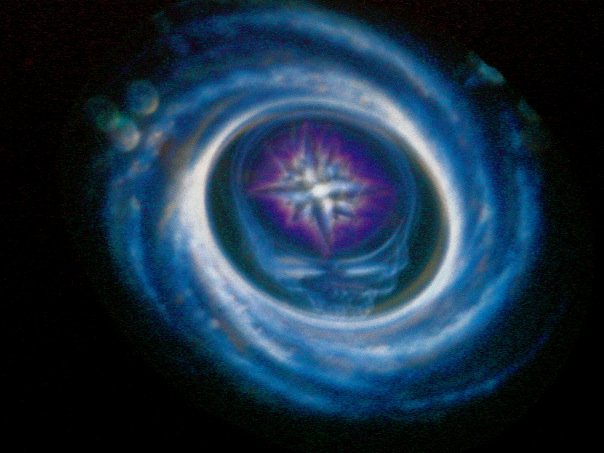
Out of the remnants of the Haight-Ashbury counterculture evolved a roaming society founded around a musical phenomenon that was held together as a culturally distinct tribe by its collective tenets of morality and spirituality. At the helm of the traveling circus were the Grateful Dead, a harmonious ensemble spurred by a dedication to music, an intellectual inclination to question reality, and a proclivity to psychedelic exploration. Through the course of the late sixties all the way through the seventies, a mythical aura materialized around the Grateful Dead as a community of dedicated disciples emerged as its following. As many Americans sought peace of mind through new age religious institutions, the Deadheads sought to negotiate the constricted political and social realities of the 1970’s through an unconventional church of their own. The church of the Dead did not come without its pitfalls as Deadheads confronted issues of class, gender, race, and drug use as the community came of age during the 1970’s. As the Grateful Dead following initially aimed to disassociate from mainstream America in a sub-community of its own, it ultimately ended up coming to grips with the realities of the American landscape, seeking to live through those realities on its own terms. An analysis of the emerging “Deadhead” community in the 1970’s can tell us much about the progression of the 1960’s counterculture as well as shed light on the cultural veracity of the 1970’s themselves.
A rejuvenation of the religion of old and a discovery of religion anew took place during the early seventies as it seemed certain that the societal and political ideals confronted through social movements at the end of the sixties had seemingly failed. As many deemed it necessary to take the initiative to better their own lives, they sought spiritual guidance through rejuvenated and contemporary religious movements. The evolution of the Evangelicals, the New Right Christians, and the resurgence of Conservative Judaism all developed with the introduction of New Age or personal awareness movements. Perhaps aligning more closely with concepts accepted in many New Age religions that embraced non-western ideologies, the Grateful Dead emerged as the focal point of a church of its own. As the war in Vietnam raged on, the utopian ideals of the counterculture all but gone as far as the dominant society was concerned, and any faith in leadership trounced by the incriminating actions of Richard Nixon in the Watergate scandal, Deadheads maintained their zest for life through psychedelic communion at the Church of the Dead.
The church had no boundaries, other than an affinity for the music of the Grateful Dead, a sense of open-mindedness and karmic acceptance. The sacrament of the church may have been smoking a joint, dropping a hit of LSD, to something as benign as listening to the music play. Individuals defined their own level of worship. A correspondent for Time magazine suggested, in 1978, that for the devout Deadheads the “concert was a church they attended, not so much for gospel as for the communion and the community, the hymns and the incense.” In essence, the Church of the Grateful Dead was antithetical to what modern religious institutions usually attain to be. Nowhere do the Dead outline what behavior is good or bad, or right or wrong, as suggested through the Bible in Judaism or Christianity. As no tenets of worship were laid out for the community to inherit, Deadheads developed their own individualized spiritual outlook. In a sense, the band provided a medium, a place, and inspiration for followers to question and develop a religious perspective that remained unique to them. Although commandments or edicts were not presented to the Dead community in an explicit format by the band themselves, a basic gist of what the community attempted to embody presented itself through the lyrics in the songs, and even the band’s name.
Illustrated through the choosing and establishment of the name the Grateful Dead, as the band’s moniker, is the unspoken sentiment that tied intricately into the band and Deadheads’ societal views. When founding member Phil Lesh discovered that another band by the name of the Warlocks recorded an album, the band sat down to ponder a new name. Potential names were thrown back and forth, until one of them decided to pick up a dictionary and leave it up to fate. A young Jerry Garcia picked up a copy of Funk and Wagnall’s New Practical Standard Dictionary, shuffled it open to a random page, and pointed to an arbitrary point. The words “Grateful Dead” peered from below his finger. According to the dictionary, the “grateful dead” referred to a type of ballad coined by Francis Child, a musicologist from the nineteenth-century. The grateful dead folklore entailed a protagonist who came upon someone about to receive an improper burial due to the debt with which he died. The protagonist then paid for the man’s burial in full without any incentive or reward. Later on in his life, someone gave aid to the protagonist in an insurmountable task, and that someone was the gratefully dead man paying his dues to the one who paid for his burial. The ballad of the gratefully dead embodies the spiritual principle of karma and the guiding principle of the Dead community. If it were possible to highlight a succinct ideal that guides the Grateful Dead Church, it would be that ‘If you give when you can, you shall receive when you need.’ In conjunction with “what goes around, comes around” as their primary creed, the Deadhead community emerged out of the San Francisco counterculture in an intricate Diaspora of their own.
To talk about the emergence of a Grateful Dead Diaspora it is necessary to confront the philosophies and beliefs garnered by the members of the band as they navigated their own spiritual journeys. The members of the Grateful Dead tended to stray away from pushing their beliefs upon others, which was reflected in their mutual outlooks. Perhaps their greatest mutual conviction was that of tolerance, which in turn greatly reflected upon the Grateful Dead community. They had a sincere tolerance towards others ideas, as they felt it would be ignorant for them to deduce that they had an understanding of the elemental nature of life. The common belief held amongst band members emanated through the Dead’s improvisational musicianship, and the lyrics evoked in their songs. The lyrics of Robert Hunter, the Dead’s chief lyricist, sometimes equated with modern day prophecy, projected rhetorically to question and encourage audience members to ponder the words deeper on their own spiritual journey. Hunter never intended to provide answers to those who listened, but rather to induce a desire to question the mysteries of life.
In union with the music, the lyrics of Robert Hunter conduced powerful thought that could be applied to Deadheads’ personal plights throughout their lives. While Hunter’s lyrics sometimes pertained to his personal experiences and those of the band, they were presented in an ambiguous context that allowed listeners to find meanings that directly associated with their own multifaceted voyage. First performed in June of 1975, Franklin’s Tower was literally meant to convey a desire to do away with the atomic dew that bogged down societies since the dawn of the atomic age at the end of World War II. Although the song has specific meanings, certain lines communicate messages uniquely to each listener. In one particular line of Franklin’s Tower, Hunter intoned that “some come to laugh their past away, some come to make it just one more day; whichever way your pleasure tends, if you plant ice you’re gonna harvest wind.” Through the uncertainty expressed in the lyric, one could associate it with the Cold War leaders and the policies they brought forward, which seemingly brought no resolution in the eyes of many. If one takes the lyrics out of the atomic context, then greater meanings could be associated with reasons behind ones pilgrimage to a Grateful Dead show, or the greater quandary of living life to the fullest without falling prey to vices and temptation. Hunter’s lyrical poetry embodied a spiritual essence that rang true to the diverse philosophies held within the Dead community.
The lyrics of Hunter suggested the diffused nature of the Grateful Dead Church, as the band members and followers alike did not stake out clear notions and commandments that set boundaries to the community ideology. The vagueness of the lyrics showed a benevolent respect towards the religious development and freedom of their audience to think for themselves. “Deadheads usually [saw] themselves as searching souls on a journey that’s a little hard to explain, except that it’s definitely with the Dead.” The collective openness conveyed by the band to the community conduced an environment where people felt comfortable to explore their individuality and group mentality to eccentric levels.
Encouragement of eccentricity became a facet of Dead performances at the Acid Tests in the mid-sixties. Although the Dead performed at the Acid Tests, people did not come to watch them play; those who attended were considered to be part of the show as well. The collective identity between the Dead and their audience was thus forged early in their career. Deadheads sensed the feeling of collectivism at shows and gatherings, yet at the same time community objectives went tacitly understood.
Embodied in both the music and the Grateful Dead community, there was a belief in a scattered synchronicity of energy that bound the collective together. It is difficult to identify a singular force behind the communal spirituality, but the closest example would be that of Jerry Garcia, the symbolic and practical figurehead of the Grateful Dead. Garcia may have been the focal point of Dead society, yet he would not coherently lead his flock, which in time spawned the dissociated tenets of the Grateful Dead religious philosophy. Garcia had a strong motivation to do what he wanted to do in life, but that required him to first find out what he wanted to do. In many instances, he would discover a new hobby such as painting or drawing, or pick up a book on a new philosophy, only to find that it was not what he was looking for, and then subsequently drop it altogether. The ambivalence and ambiguity he reflected in his personal ventures would reflect upon the social makeup of the Grateful Dead and its following. With his ambivalent nature, he would not make decisions that largely affected those who were in the band and the extended crew and family. It was not in his character to make executive demands that could be flat wrong, and he recognized that as he always questioned his fundamental beliefs. Although his character defined an ambivalence that ran throughout the hierarchy of the Dead community, he also set the precedent of trusting one’s instinctive disposition.
There were times when Jerry Garcia trusted his intuition enough to set a course for the Grateful Dead’s future enterprises. Garcia appeared a very receptive person, able to sense quickly whether he could work well with someone. Back when the Grateful Dead were still the Warlocks, a young Phil Lesh showed up at a gig at a pizza place in Menlo Park. Lesh recalled enjoying the show to such a level that for the majority of the time the Warlocks played, he danced front and center of the stage. Garcia noticed that the gangly looking dancing man had some rhythm in his steps, and recalled seeing him with a bass guitar in his hand at another time. When the show was over he cornered Lesh and bellowed, “Hey, man—you’re going to be the bass player in this band,” as Lesh remembered. Instances such as Garcia’s encounter with Lesh speak to the general spontaneity and intuitiveness that Garcia’s diffused leadership brought to the Grateful Dead and its community. Spontaneous decisions and outbursts guided the direction the band would take in many instances in their music and their basic outlook. In turn, Deadheads embraced the practice of following their intuition when they faced the challenges of life.
The effect of LSD upon the beliefs of the band and the community should not remain understated. From the mid-sixties into the early seventies, LSD was highly circulated amongst the countercultural communities in Haight-Ashbury, Palo Alto, as well as other hippie enclaves. As LSD was legal until 1966, it was embraced by the counterculture community after members of the subculture experimented with it through government sanctioned research. The members of the Dead embraced LSD not to meagerly get high, but as a tool to expand their greater perception of reality. Improvisation is what the band based their aims in music around, and when LSD was presented to them, psychedelic exploration seemed like a natural progression in confluence with their aim for synchronicity in music and thought. Jerry Garcia loved taking LSD as “a mental exercise, finding it ‘incredibly optimistic.’” To equate LSD as the binding reason for the band’s musical improvisation and the communal dedication of its followers, as many mainstream Americans deemed to be the case, would be foolish. Prior to the introduction of LSD into their lives, the members of the Grateful Dead established the fundamentals of what they believed and practiced. The tenets of their philosophy aimed to accept no specific way of thinking, and with that LSD came along and served as a catalyst or a medium that took the very nature of their improvisation to a higher level.
Through experiments with LSD and other illicit substances, the band desired to discover alternative outlooks in regard to reality. The band came into regular contact with LSD as they lived in communal environments in Olompali and the Haight-District in the late sixties. Their provider, also known as the bands “alchemist” was Owsley “Bear” Stanley. Owsley mirrored the sentiments of the Deadhead community, and Aldous Huxley, widely known as the mystical patriarch of the counterculture, as he believed the psychedelic experience should not be construed as distorting one’s reality, but rather as an alternative course to view the universe as the drug breaks down one’s everyday mind-set to perceive reality as a collection of connected occurrences. He believed LSD truly had the potential to set the mind free of the boundaries and norms instilled upon humanity. The experiences of taking LSD in confluence with experiences in the Dead community are beyond boundaries of concise explanation, and with that, concluding an all-encompassing explanation is counterintuitive to the experience of taking LSD, and the tacit aims of the Grateful Dead community.
For the Grateful Dead and its extended family, the idealism of the 1960’s and the ‘acid culture’ that ensued ended on a summer’s day in August of 1967, when the Diggers organized the “Death of the Hippie” ceremony, formally eulogizing the name “hippie” that mainstream society attached to members of the San Francisco subculture. As the youth of the nation swarmed into the Haight District during that so-called “Summer of Love” in 1967, the once formerly quaint oasis of communalism that the Grateful Dead held as a home had become ensconced with mobs of aspiring “hippies” and the mainstream media. With newfound attention to the area, the police finally saw fit to restore order to the chaotic enclave, and the Grateful Dead moved along on their “long, strange trip.” The crumbling scene in San Francisco spurred the Dead to play elsewhere, and proved to be a catalyst for an East Coast tour.
The band more or less said goodbye to the Haight, with an impromptu free concert in March of 1968. After a nasty skirmish between the police and hippies a few weeks earlier, the city declared a street festival for March 3rd, opening the way for the Dead to play as they seldom passed up an opportunity to play music in the streets. The performance would be the last for the Dead in their mythical stomping grounds, and they were eager to tour onwards to other regions in the United States. Although the collective atmosphere of the Haight District failed to spurn a lasting cooperative community, the Dead and their growing family took their ideals with them wherever they toured. This would not be the first time the Dead left the confines of California to explore abroad, as they spent the prior summer, “The Summer of Love,” on their first East Coast tour. They would find that the shows they played in New York, and the subsequent followers they garnered would be the foundation for the beginnings of a Grateful Dead Diaspora.
As the mainstream media demonized the happenings in the Haight District, the Grateful Dead moved along on their first tour to the East Coast of the United States. First stop was on June 1st in Tompkins Square Park in New York City, where band members and crew cited that the vibe between the Dead and the audience was of an odd nature. To add to the peculiar environment at the first New York show, someone threw a framed lithograph of Jesus into Bill Kreutzman’s base drum. Whether or not the incident was taken as an omen, the band members found themselves in a comfortable environment at the second East Coast show. On June 3rd, the Dead and their crew traveled fifty miles out onto Long Island to play in the gymnasium of a fledgling university. “Consequently, the Dead’s first paying East Coast gig was at Stony Brook, widely considered to be the stonedest campus in the East.” Whether or not the relatively liberal use of drugs had anything to do with the hospitable nature of the Stony Brook campus, the Dead immediately accrued dedicated fans from the college community.
When a college freshman arrived on the Stony Brook campus for his first semester in the 1970’s, one of his first encounters was with a dorm mate that played him some bona fide Grateful Dead music. The student recalled arriving at the Stony Brook Campus listening to his “little old Grateful Dead tape” and when he settled down in his dorm room a lanky looking fellow from across the hall invited him over to “listen to some real Grateful Dead.” Once he discovered that a genuine Deadhead lived across the hall, he realized that he had finally arrived at college. While he came to college to acquire an academic education on the exterior, he sought a higher form of education in self-discovery and spirituality through new-fangled life experiences and newfound acquaintances. With an aim towards enlightenment, students on college campuses across the nation found solace and illumination through the music and the community of the Grateful Dead. As a community of college aged people sought contemporary and offbeat experiences of their own, ambitious minds on the Stony Brook campus paved the way for the Grateful Dead to play on campus and connect with the innovative young minds on the precipice of adulthood.
The chairman of the Student Activities Board at Stony Brook was Howie Klein, who booked the Dead and brought their Long Island following to fruition. Klein also served to be a disc jockey at the campus radio station, and with his close friend Sandy Pearlman, the student body president and the editor of Crawdaddy, a flagship rock publication, Klein was able to book the Dead on college campuses all across Long Island. As Pearlman garnered connections in the music business through his position at Crawdaddy, he often received prerelease albums from record companies. When Pearlman came upon a copy of the Dead’s first album, he shared it with Klein, who immediately was taken by the music. Klein’s appreciation for the music motivated him to promote the Grateful Dead throughout the Long Island area. Due to the aspirations and motivations of a few progressive Stony Brook students, the first facet of the Grateful Dead Diaspora developed on Long Island. The area would remain an essential Grateful Dead territory into the next decade.
The Dead replicated their experience at Stony Brook and the greater Long Island area all over the country. From 1967 and out through the 1970’s they toured from east to west, north and south, to Canada and back, in the process. Dead communities developed throughout North America. By 1980, a Rolling Stone columnist expressed the sense that “in all, it looks like a village gathering, except that these people who greet each other as old friends [at concerts] so familiarly are from all over the country.” The great nomadic tribe found its roots in the late sixties into the seventies, to the extent that by 1980, networks of Deadheads from geographically distant locations fermented friendships with their fellow brethren.
It became clear that by the early 1980’s an established Deadhead community existed throughout the United States, and within the larger community there existed Deadheads that committed to the church at different levels of devotion. A religious spectrum developed amongst the Deadhead community, as certain people tended to see a show whenever their daily lives would permit the excursion, while more orthodox Deadheads committed to building their lives and ultimate sustainability around the band’s touring schedule. Large numbers of followers tended to track the Dead throughout the country on their various show stops. Orthodox Deadheads intended on seeing as many shows as humanly and financially possible in their travels. The people that followed the Dead in this nature tended to financially support their endeavors by selling crafts, food, drugs, and various other items to fellow Deadheads in parking lots outside of venues on strips that became known as “shakedown streets.” The orthodox members of the Dead community attempted to reflect the communal atmosphere of a traveling Haight-Ashbury as best they could.
On the other end of the religious spectrum lay the secular Deadheads. Secular Deadheads tended to recognize the value of the communal atmosphere a Grateful Dead concert provided, yet they did not insert themselves as deeply into the environment as their orthodox counterparts did. They may have indulged in community vices, or just appreciated the intricacies of the Dead’s improvisational repertoire. A secular Deadhead, who attended as many concerts as he could in the early 1970’s, reflected that he envied the lifestyle of the orthodox Deadheads, yet had personal responsibilities that required his attention at home. Sometimes obstacles of life provided to be too encompassing for one to drop everything and follow a musical group around, yet even the secular Deadheads embraced a certain mentality and spiritual outlook that was conveyed at the concerts. When a secular Deadhead was confronted with the question: If you could define your experiences with the Grateful Dead in a few words, what would you say? He replied, “Be Kind.” Although secular Deadheads did not embrace the Church of the Dead as a total lifestyle, they tended to take the spiritual essence of what defined the community and applied it to their life as best as they could.
Another sector in the religious spectrum included the scribes of the sacred community. Those who devoutly taped the shows of the Grateful Dead created an oral bible of sorts that allowed the community to reflect upon the music even if they could not attend a particular show. The tapers avidly procured the best sound equipment possible, and staked out the best areas to record at a show, to bring the live music of the Dead to anyone who chose to listen to it. The band appreciated the work that the tapers did and in turn allowed them to openly record shows, even providing a reserved section behind the sound mixer for their use only. Other musical groups usually frowned upon the practice of recording their live music, otherwise known as “bootlegging.” In allowing the taping and subsequent trading of their live shows, the members of the Grateful Dead set the stage for their melodious bible to flourish in all ends of the Diaspora.
As tapes of Dead shows popped up throughout the Grateful Dead Diaspora, a trading circuit followed that allowed the musical canon to be transferred to all ends of the community. The phenomenon of the tapers provided Deadheads, who were unable or unwilling to traverse the greater United States to follow the band on tour, an ability to keep up with the events of the nomadic community. The tapers provided invaluable connections to immobile members of the Diaspora who intended to embrace the message and music of the Grateful Dead, yet could not take communion first hand. The recorded shows also provided an opportunity for those who experienced the shows to hold onto an inkling of their experience. Lastly, the taper circuits created a conduit for non-Deadheads to experience and embrace the music of the Dead. As the taping and transfer of Dead shows persevered throughout the 1970’s, the Diaspora community garnered new members as people novice to the Dead came in contact with their music and philosophy.
A feature of the Diaspora community tended to rely around the common identity held with the music and philosophies of the Grateful Dead. When one displayed his or her “freak flag,” which entailed a Grateful Dead T-shirt modeled after an album cover, a dead bear sticker gracing the side of a Volkswagen Beatle, or a lyric such as “I Need A Miracle” on the bumper of an automobile, they sent out a signal of affability to any Deadheads who viewed it. Displaying a signal to fellow Deadheads when intermingling in the greater society reaffirmed their individual connections to the Dead community, while simultaneously presenting a signal to other Deadheads. Similar to someone of the Jewish faith wearing a Star of David, or a person of the Christian religion wearing a cross, the various symbols embodied in the Dead community conveyed the Deadheads’ identity as unique to that specific community.
Sometimes this process of identification could develop on more than one level, and that is seen through the emergence of a subculture of Jewish Deadheads. Although not explicitly defined, there is a large minority of Jewish Deadheads within the greater Diaspora. A past Deadhead found a new friend in someone that crossed their path with a “steal your face” logo on their shirt, and “Grateful Dead” etched below it in phonetic Hebrew. That Deadhead identified immediately with their fellow tribe member, not only as a Deadhead, but also as a Jewish Deadhead. A Jewish subculture does exist amongst the greater population of Deadheads. Perhaps Jewish people identify with the scattered dynamic that makes up the Dead community, as it is structured similarly to the international Jewish Diaspora. The history of the Jewish people in the United States, and their tendencies to lean towards progressive ideals may also contribute to the appeal of the Grateful Dead amongst Jews.
While the Deadhead community appeared totally inclusive, the base of the community tended to be generally middle class and Caucasian. Within the seemingly stratified community, there existed a large cross section of Deadheads, which spanned across all spectrums of age and intellectual development. From the young and naïve to Owen Chamberlain, a Nobel laureate physicist who appreciated the unique nature of having two drummers in the band, Deadheads may have been predominately white and middle class, yet they lived very different lives as individuals. A working class Deadhead by the name of Tony attended as many shows as he could throughout the seventies, while holding down a blue-collar job to put food on the table for his family. Tony loved the environment of the shakedown street, the energy of the music, and the good nature of the Deadheads. He considered himself a secular Deadhead of sorts, and envied those who could live life on the road traveling to the beat of the band. He acknowledged the ethnic and social stratified nature of the Dead community, yet he also attested that the community tended to be generally open-minded and tolerant towards people of other ethnicities and classes. It goes against the fundamental nature of tolerance instilled within the Dead culture to malign those of other races and classes from entering the community. Perhaps there is a greater appeal in the music and art of the Dead that appeals to the middle class in particular, but further analysis is necessary to make conclusions of that nature.
Throughout the seventies gender tended to be an issue of contention amongst the community as well. Even with advances in women’s rights through feminist movements of the sixties and seventies that the Dead community greatly embraced as well, some gender stratification that commonly existed in mainstream society trickled into the Dead Diaspora as well. Jerry Garcia’s wife, and a member of the Merry Pranksters, Mountain Girl Garcia, recalled her desire to drive the Merry Prankster bus that they trolled around in on their escapades out and about from the Haight District. Never was her dream realized, as she believed she was maligned due to her gender, and perhaps the stereotype that women could not drive as well as men. Regardless of her position as the spouse of the leader of the Grateful Dead community, and one who had lived through the ups and downs of all those years, she never felt as if she was a fully equal member of the society. Mountain Girl Garcia’s convictions speak to the Dead community’s inability to take all of the negative norms of mainstream society out of their environment. Some of the harmful stereotypes that continued on in the dominant culture tended to parallel the level of progressiveness with the Church of the Dead. Although members may have not explicitly stated sentiments of women inferior to men, the feelings may have existed deep within the collective psyche of the community.
While the Deadhead community embodied progressive ideals with an eye towards complete equality amongst the people, it fell prey to some of the stereotypes and generalizations that mainstream America embraced. With that, it is fair to say that religious communities throughout times gone by have fell victim to prejudices, vices, and hostilities. Regardless of the pitfalls confronted involving issues of class, gender, race, and drug use, the Grateful Dead and its disciples emerged as a religious community during the 1970’s, with a system of beliefs that were held with passion and conviction. As the future of mainstream society seemed bleak during the seventies, Americans turned to religion of old and new in large numbers as they sought to negotiate the dreary political, social, and economic realities they faced. The Deadhead community emerged out of the same sociopolitical context, seeking to disassociate from the gloom and doom of modern society, yet ultimately navigating the American actuality in its own distinct way. After the disintegration of the Haight-Ashbury countercultural community, the Grateful Dead toured throughout the United States and beyond, conveying their philosophies and spiritual inclinations to a materializing group of devoted believers. As the 1970’s came to a close the formerly fledging Deadhead community emerged as the Grateful Dead Diaspora.
© Watts Glow Grateful Productions, 2008.
Please like our Facebook page, Grateful Globotz, or follow us on Twitter @GratefulGlobotz, so you don’t miss any future postings out of our camp.
Sources:
[1] Bruce J. Schulman, The Seventies (New York: The Free Press, 2001), 96.
[2] Brent Wood, “Robert Hunter’s Oral Poetry: Mind, Metaphor, and Community,” Poetics Today 24, no. 1 (2003), http://z3950.muse.jhu.edu.libproxy.cc.stonybrook.edu/journals/ poetics_today/v024/24.1wood.html.
[3] David Hajdu, “How the Dead Came to Life,” Rolling Stone, no. 982 (2005), http://vnweb.hwwilsonweb.com.libproxy.cc.stonybrook.edu/hww/jumpstart.jhtml?recid=0bc05f7a67b1790e7a3b10a3113e85a225f5176c58a77351585e9c45a5664e2f1d115544a398174c&fmt=C.
[4] Paul Basken, “Learning from the Dead,” Chronicle of Higher Education54, no. 16 (2007), http://web.ebscohost.com.libproxy.cc.stonybrook.edu/ehost/detail?vid=1&hid=15&sid=ca71f91c-b018-4f7a-9a5a-9eba748cc2e8%40sessionmgr2&bdata=JnNpdGU9ZWhvc3QtbGl 2ZQ%3d%3d#db=ehh&AN=28105283.
[5] Alan Trist and David Dodd, eds., The Complete Annotated Grateful Dead Lyrics (New York: Free Press, 2005), 189.
[6] Trist, Dead Lyrics, 189.
[7] Holly George-Warren, ed., Garcia: By the Editors of Rolling Stone (New York: Rolling Stone Press, 1995), 148.
[8] George-Warren, Garcia, 148.
[9] Hajdu, “Dead Came to Life.”
[10] Hajdu, “Dead Came to Life.”
[11] Dennis McNally, A Long Strange Trip: The Inside History of the Grateful Dead (New York: Broadway Books, 2002), 103.
[12] McNally, Long Strange Trip, 105.
[13] Wood, “Hunter’s Oral Poetry.”
[14] Trist, Dead Lyrics, 135.
[15] Jake Woodward, ed., Grateful Dead: The Illustrated Trip (New York: DK Publishing, 2003), 67.
[16] Woodward, Illustrated Trip, 70.
[17] McNally, Long Strange Trip, 198.
[18] Kerri Tinucci, et. al., interview by authors, Stony Brook, New York, October 18, 2008.
[19] McNally, Long Strange Trip, 198.
[20] McNally, Long Strange Trip, 198.
[21] George-Warren, Garcia, 148.
[22] Trist, Dead Lyrics, 290.
[23] Russell Glowatz, interview by author, State College, Pennsylvania, October 13, 2008.
[24] Glowatz, interview.
[25] Trist, Dead Lyrics, 102.
[26] Glowatz, interview.
[27] McNally, Long Strange Trip, 387.
[28] Glowatz, interview.
[29] Basken, “Learning from the Dead.”
 With the New Year upon us, it’s a fitting time to reflect upon the sorcerous year of song currently reaching its conclusion. Musicians across the JamBandaverse have been no doubt firing on all cylinders in 2015, with this energy largely manifesting from the top down, originating from Phish and the surviving members of the Grateful Dead. While I believe trickle-down economics is a big bowl of bullshit, the theory holds water when applied to the jam band scene. And our collective consciousness was given a shot of adrenaline from up top when in January, Fare Thee Well: Celebrating 50 Years of Grateful Dead was announced featuring Trey Anastasio at the helm. It all started there, and through months of preparation, and five transcendent Dead shows, Trey and the boys set the stage for a year in jam unrivaled in recent history.
With the New Year upon us, it’s a fitting time to reflect upon the sorcerous year of song currently reaching its conclusion. Musicians across the JamBandaverse have been no doubt firing on all cylinders in 2015, with this energy largely manifesting from the top down, originating from Phish and the surviving members of the Grateful Dead. While I believe trickle-down economics is a big bowl of bullshit, the theory holds water when applied to the jam band scene. And our collective consciousness was given a shot of adrenaline from up top when in January, Fare Thee Well: Celebrating 50 Years of Grateful Dead was announced featuring Trey Anastasio at the helm. It all started there, and through months of preparation, and five transcendent Dead shows, Trey and the boys set the stage for a year in jam unrivaled in recent history.


